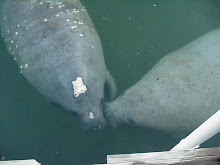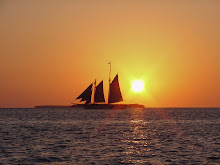I am drawn to George. The more I know about him, the more I am drawn to him.
The Colonel is aware of my feelings for George but this does not cause him to become jealous.
George and I keep crossing paths but we have never met.
This is George, George Rogers Clark.
The first time I met George I was in grade school. I was learning about early Indiana history.
George was a soldier from Virginia and the highest ranking American military officer in the Northwest Territory during the American Revolutionary War. The Northwest Territory included all the land of the United States west of Pennsylvania and northwest of the Ohio River. It covered all the modern states of Ohio, Indiana, Illinois, Michigan and Wisconsin, as well as the northeastern part of Minnesota. The area covered more than 260,000 square miles.
In 1779, George and his men captured Fort Sackville in Vincennes (in what is now, Indiana) which greatly weakened British influence in the Northwest Territory. In 1783, the British ceded the entire Northwest Territory to the United States. George has often been called the "Conqueror of the Old Northwest".
The next time our paths crossed, I was attending college. In 1979, I began studies at Vincennes University in Vincennes, Indiana. George and I walked the same land (200 years separated our footfalls). I visited the site of the captured fort which is now marked by the George Rogers Clark Memorial. The memorial was dedicated by President Franklin D. Roosevelt in 1936.
I would revisit Vincennes again after graduating (once with my sister Kathleen in 2009 and in 2013 with The Colonel).
The Colonel and I made another stop in Vincennes in the summer of 2014. We were heading back to Florida after visiting with my family. The George Rogers Clark Memorial was closed for repairs :(
We continued south where George and my paths would become further entwined.
We stopped in Clarksville (yes, named after George), Indiana that sits along the banks of the Ohio River. The Colonel and I visited George Rogers Clark's "retirement home" site, once known as Clark's Point. George's cabin, built in 1803, is no longer there, but a replica of his cabin and a replica of the McGee's cabin, behind George's cabin, are there now. The McGees were African-American indentured servants of George. The 7 acre tract of land is now part of the Falls of the Ohio State Park.
Much to my chagrin the cabins were not open :(
Clark's Point was situated at the lower end of the Falls of The Ohio on a sharp curve. This enabled George (and us) to have a spectacular view of the falls and also see both up and down river for a considerable distance.
After walking the grounds around the cabin The Colonel and I made our way to the Falls of the Ohio State Park interpretive center.
The center was very interesting. The main feature of the center and park is the exposed fossil beds (which create the falls) dated from the Devonian period (about 400 million years ago).
The Colonel and I watched a film about the Devonian period and how the fossils we would see later were formed.
We walked down the center's back stairs and made our way to the shores of the Ohio River.
Our way was a bit arduous. There were many huge logs strewn about the shoreline and the fossil beds were rough and uneven.
But what fossils we saw along the way! Too bad we could not take any with us. George Rogers Clark would go fossil hunting here and send specimens to his good friend, President Thomas Jefferson.
The center also has information about George's military exploits as well as his brother William Clark's partnership with Meriwether Lewis as it pertained to the Corps of Discovery Expedition (1804-1806). Lewis and Clark began their expedition from George's cabin.
George lived in his little cabin for 6 years. In 1809, he suffered a stroke, causing his right leg to become badly burned in the fireplace when he fell. The leg became terribly infected and had to be amputated. He was taken across the Ohio River to Louisville to have his leg removed by Dr. Richard Ferguson. The only anesthetic the Revolutionary War Hero requested and received was the music from a fife and drum corps playing in the background.
This painting of George Rogers Clark hangs at Locust Grove. It was painted after his stroke.
George was unable to live by himself any longer and was persuaded to live with his younger sister and her husband in their Louisville home, Locust Grove.
The Colonel and I visited Locust Grove. It is a beautiful place. I was very interested in seeing George's room at Locust Grove.
George Rogers Clark lived at Locust Grove for nine years. He died in 1818. He was buried at Locust Grove but then 1869 his remains were moved to Cave Hill Cemetery in Louisville (which The Colonel and I visited).
Like many American Revolutionary War leaders, George Rogers Clark paid for his supplies and those of his men by using his own funds. When his funds ran out he bought supplies on a promise of future payment. After the war, George was initially hopeful that Virginia or the national government would settle the debts he incurred while fighting on the frontier, especially given the territorial gains the country made through his wartime efforts. However, no government would take responsibility, leaving George to be pursued by creditors for the rest of his life.
George Rogers Clark never married. He felt he could not offer any woman a proper home and family life due to his financial situation.
I think that aspect of George Rogers Clark's life is what touches me most and makes me feel sadness for George. Being married to The Colonel, I experienced what sacrifices a military person (and their family) makes while in the service of their country. Unlike George, The Colonel does receive compensation for his service.
I don't know why George and I keep crossing paths, but I am glad we do.














































































